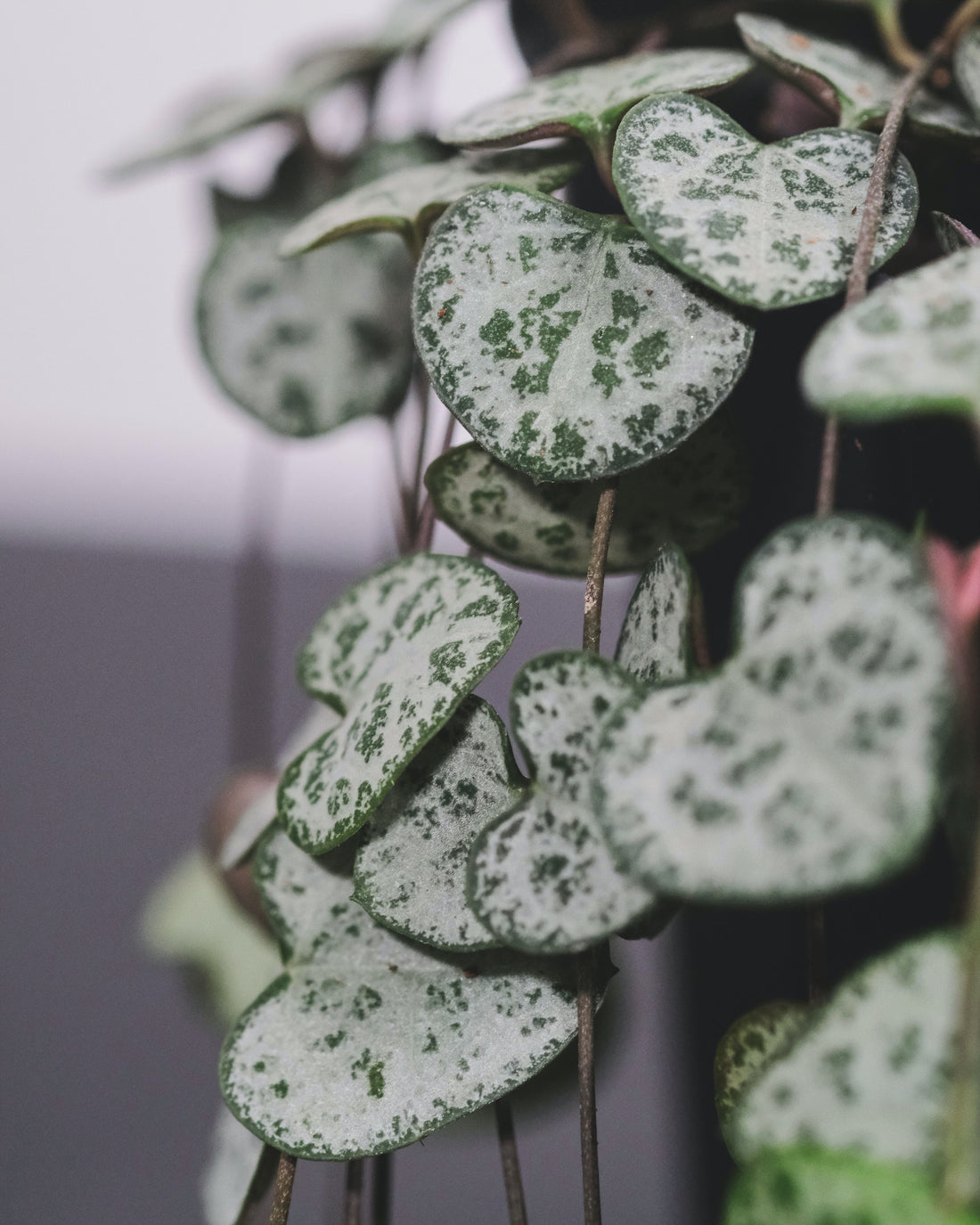Ceropegia are the type of plants that will steal your heart with their ease of care and unique foliage. There are at least 420 species of this plant, and while they won't leave you giggling with a craving for snacks, they're guaranteed to bring great vibes into your home. Ceropegia are native to a wide geographical range, starting in sub-Saharan Africa, and stretching all the way to the land down under in Australia.
The most popular of the ceropegia family include string of hearts and the variegated string of hearts (ceropegia woodii), commonly referred to as VSOH. These plants grow heart-shaped leaves on slender vines, and bloom purple, lantern-shaped flowers in the summer and fall seasons. The foliage of the non-variegated plant is dark green with a splash of silver patterning with vibrant, purple undersides, while the VSOH is green with white and pink variegation. They look great in tall or hanging planters so their vines can cascade down, showering your space with love-shaped greenery.

GENERAL CARE
LIGHT
Bright indirect light. They can adapt to lower light levels, but will not be as vibrant, and may not flower.
WATER
Water once every 2 weeks or when soil is completely dry.
FEEDING
Use diluted plant food once a month in the spring and summer. Stop feeding in the fall and winter since the plant goes dormant and will not need the extra nutrients.
TOXICITY
Non-toxic and safe for children and pets.
Care instructions are usually consistent for most ceropegias, but we always recommend researching your specific plant to make sure you get it right the first time.

COMMON ISSUES
Ceropegia are extremely adaptable with the ability to thrive in most spaces. They grow quickly and are easy to propagate, and can easily trick anyone into thinking they have a green thumb. We all know nothing in nature is perfect, though, so here are a few things to look out for when preparing to keep a ceropegia in your collection.
Looking leggy? It's true that string of hearts can start looking a bit bare as their vines elongate. This is typically an indicator that the plant is not receiving enough sunlight, or it's in need of nutrients. Try moving your ceropegia to a brighter spot, or use an overhead grow light as a supplement to lower light conditions. You should repot your plant every 12 months or so with fresh soil to keep it aerated and packed with essential nutrients. If you hate the way your plant has grown, you can always snip it back with pruning shears, and propagate the vines. This will actually create a fuller look as the plant continues to grow.
Ceropegia are succulents that can tolerate long periods of drought, but that doesn't mean you should be stingy with the waterings. Your plant will let you know when you've taken things too far by becoming limp and wrinkled. If you really stretch things out, the leaves will begin to yellow or crisp up, eventually falling off. Don't let it get there. Once you notice some wrinkles, go ahead and saturate the soil. You'll find that the leaves plump right back up within a day's time. Easy to please and forgiving? Don't know about you, but ceropegia plants definitely have our heart.


